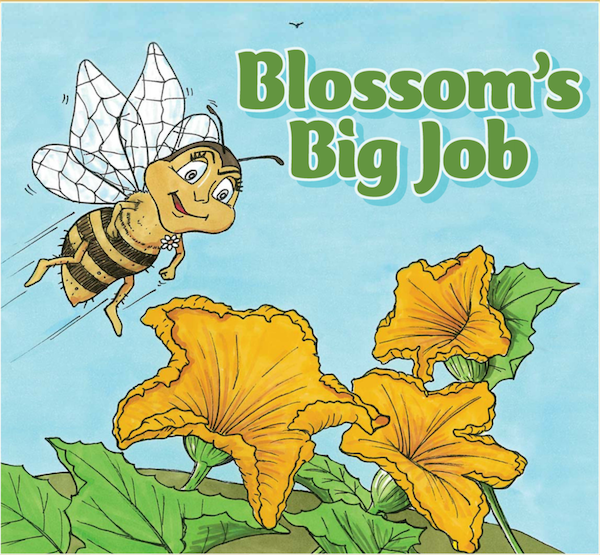Grow… Understanding: Common Plant Misconceptions
This week, we are celebrating GROW, as part of our Little Green Thumbs charter ‘Plant, Grow, Eat and Share’.
There are countless opportunities to grow understanding as we explore our classroom gardens. As we grow a school garden, we explore the relationships between our environment, our community, our food and ourselves. As we encourage our students to grow their understanding, we must be ready to dispel common misconceptions about plants and the natural world.
We know that our students do not arrive in our classrooms as blank slates.
Students have explored and reflected on the world around them and may have created their own explanations for how the world works. We want to encourage a student’s innate curiosity, prompting students to ask questions, seek answers and make sense of the world around them.
However, students will sometimes generate inaccurate ideas about plants. Sometimes these misconceptions are formed from interpretation of their own experience, from oversimplification or generalization from educators, or even through errors printed in teaching literature. A student’s limited classification knowledge may lead to errors or even their tendency to give plants human characteristics. Many of these incorrect ideas can persist into adulthood, and education researchers have stated difficulty in eradicating misconceptions once established.
In recognition of our GROW week, we’ve compiled our top 5 misconceptions about food and plants. The best way to stop these common plan misconceptions may very well be to recognize them and squash them before they take root!
1. Soil is an inert substance, acting only to hold plants roots in place.
Not true: soil is alive! A handful of soil has more microorganisms in it than there are people on the planet. Soil is a complex habitat of mineral particles, decomposing organic matter, air, water and living organisms. The living organisms include plant roots, bacteria, fungi and larger animals like earthworms or insects.
Many ecologists consider soil to be one of the most important pieces of earth’s ecosystems. Plants, microorganisms, water, all come together in the soil, and what happens in the soil can dictate what happens in the ecosystem. Check out the FREE k-12 resources from the Soil Science Society of America to dive deeper into a soil exploration.
2. Plants get their nutrients and energy from ‘plant food’
It’s common for students to attribute animal or human characteristics to plants, but this can lead to confusion. Plants don’t ‘eat’ like humans do! Humans and animals get their nutrients AND their energy from the food they eat. Nutrients absorbed through plant roots in the soil or fertilizer are essential to plant health, but students might think that plants get all of their energy from the soil or fertilizer too. This misconception is further enforced by the reference to fertilizer as ‘plant food’. Plants do receive essential nutrients and vitamins from soil and fertilizer, but this is not a plant’s main source of energy.Remind students that plants synthesize their own fuel through photosynthesis and that fertilizer and soil provide many other elements and nutrients important for plant health and growth. The source of energy for photosynthesis is the sun (or artificial light). Being mindful of our language can help to avoid misconceptions.
3. Plants obtain their energy DIRECTLY from the sun.
To further the misconceptions from above, students might think that plants get their energy directly from the sun, or that they ‘eat’ the sun. Plants use light energy to combine carbon dioxide and water to form glucose and oxygen. They then use this glucose for fuel. Again, plants don’t ‘eat’ the same way that humans and animals do: they make their own fuel through photosynthesis! Photosynthesis means making things from light: photo (which means ‘light’) and synthesis (which means ‘to put together’).
4. A plant’s leaves main function is to catch and take in water.
The truth is that leaves main function is photosynthesis, and the roots have the function of the intake of water. This is with the rare exception of Tillandsia plant species (epiphytes or air plants), which do not require soil to grow. Water and nutrients are absorbed through their leaves and roots are used to anchor the plants.
Oftentimes elementary students do not recognize the roots as a structure of the plant. It is a great idea to grow plants in clear containers to allow students to observe the root structure. Check out this Root Viewer and Root Observation kit from Nature Watch.
5. Plants breath like humans do.
Respiration is a function of plants, but it is not the same biological process as animals or humans breathing. In respiration, plants use oxygen to convert the sugar produced in photosynthesis back into energy to use for their growth.
We often like to think of this as plants `breathing in carbon dioxide and `breathing out oxygen. Though this simplification can be tempting to help students to conceptualize, words like ‘breathing’ refer to how animals take air into their lungs. Plants do not breathe. They absorb air through the stomata (pores) in their leaves.
Some misconceptions probably already exist in your classroom! Formative assessment can help teachers be aware of student thinking and mindful of their own understanding and explanations of concepts. Once we’ve identified misconceptions, we know that simply telling the student the correct answer does not always lead to lasting change. Research has found that children are capable of holding parallel explanations for scientific events – one explanation for the classroom and a second for the ‘real world’. Students must be given time and the opportunity for hands-on experiences for conceptual change to occur!

